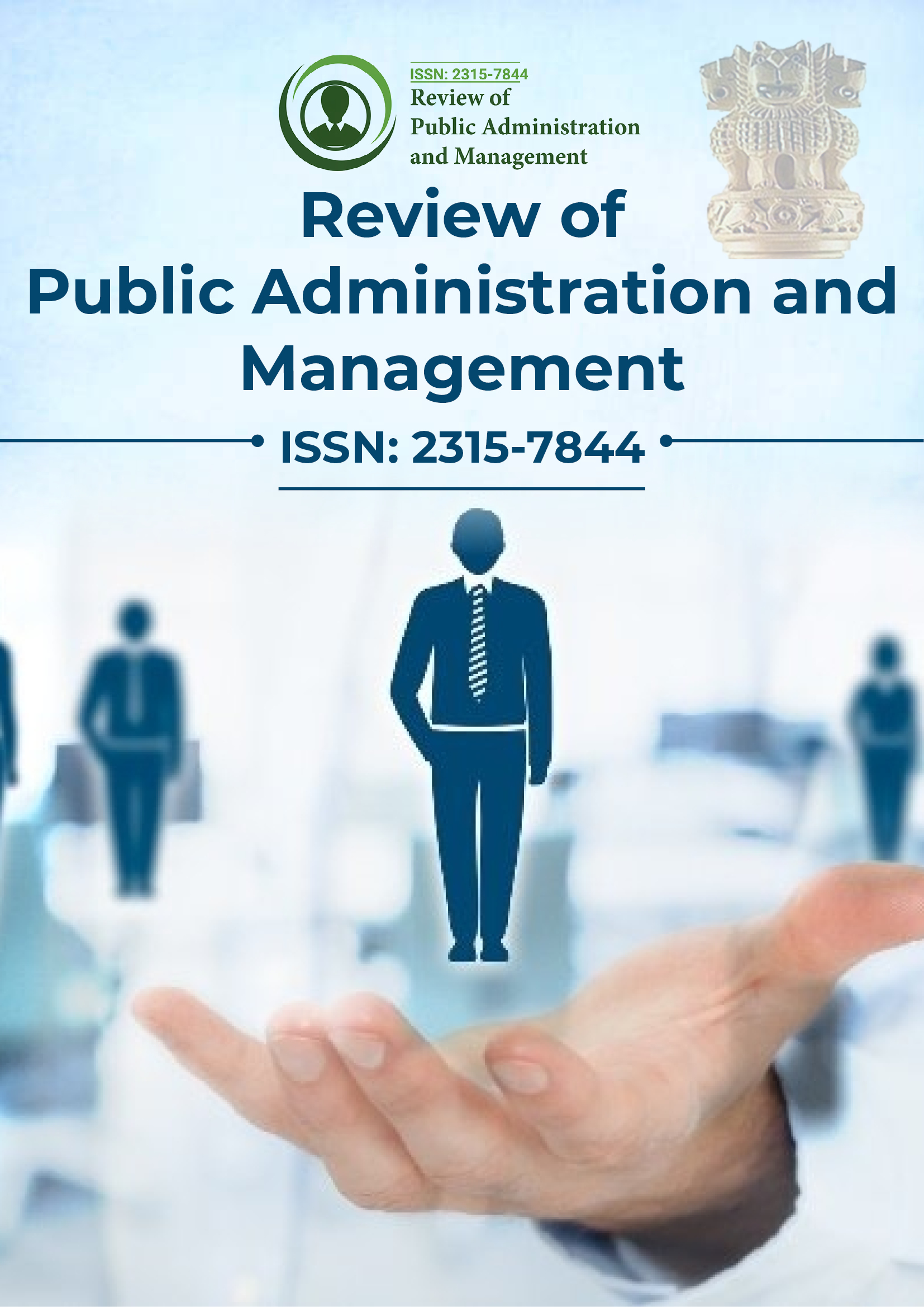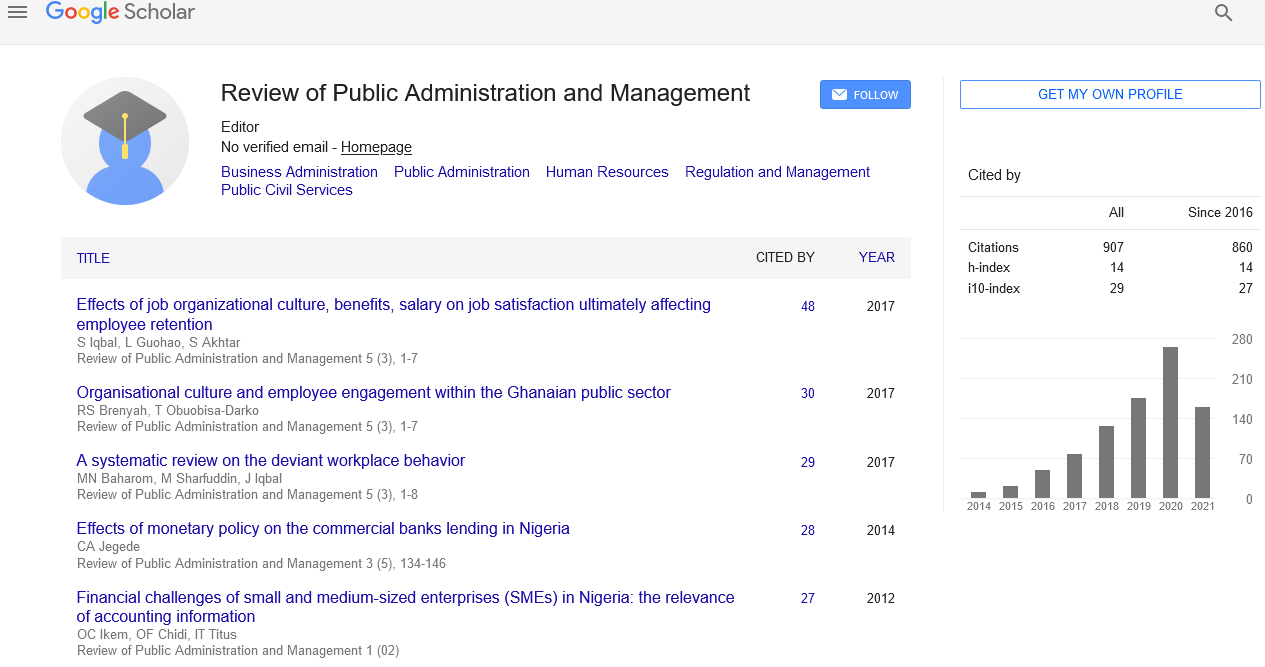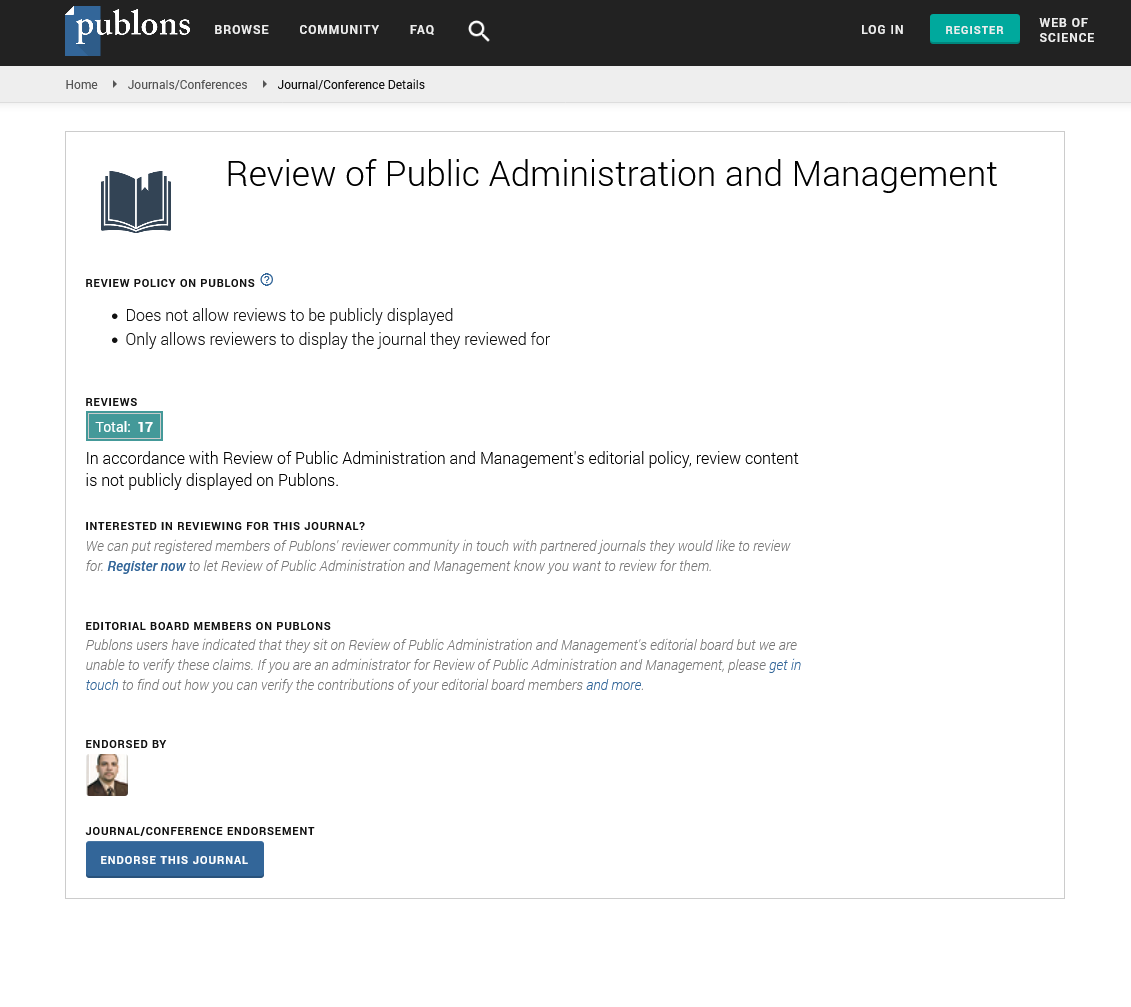Indexed In
- CiteFactor
- RefSeek
- Directory of Research Journal Indexing (DRJI)
- Hamdard University
- EBSCO A-Z
- Scholarsteer
- Publons
- Euro Pub
- Google Scholar
Useful Links
Share This Page
Journal Flyer

Open Access Journals
- Agri and Aquaculture
- Biochemistry
- Bioinformatics & Systems Biology
- Business & Management
- Chemistry
- Clinical Sciences
- Engineering
- Food & Nutrition
- General Science
- Genetics & Molecular Biology
- Immunology & Microbiology
- Medical Sciences
- Neuroscience & Psychology
- Nursing & Health Care
- Pharmaceutical Sciences
Opinion Article - (2025) Volume 13, Issue 1
Public Sector Human Resource Management in the Digital Age
Ahmet Kaya*Received: 24-Feb-2025, Manuscript No. RPAM-25-29222; Editor assigned: 26-Feb-2025, Pre QC No. RPAM-25-29222; Reviewed: 12-Mar-2025, QC No. RPAM-25-29222; Revised: 18-Mar-2025, Manuscript No. RPAM-25-29222; Published: 26-Mar-2025, DOI: 10.35248/2315-7844.25.13.483
Description
The advent of digital technologies has significantly reshaped the landscape of public administration, particularly in the area of Human Resource Management (HRM). In the digital age, public sector organizations face growing expectations for efficiency, responsiveness and innovation, necessitating the transformation of traditional HRM practices. The integration of digital tools, data analytics and automation into public HR systems not only enhances administrative effectiveness but also redefines the roles, skills and engagement of public servants. As governments strive to meet evolving public demands, reimagining HRM through a digital lens has become a strategic imperative for building agile, inclusive and future-ready public workforces. Public Sector Human Resource Management in the digital age is characterized by a shift from process-heavy, bureaucratic models to strategic, data-driven and technology-enabled systems. Traditional HR functions such as recruitment, payroll, performance appraisal, training and employee engagement are now increasingly supported or replaced by digital platforms. E-HRM systems and cloud-based platforms enable real-time access to employee data, streamline workflows and reduce administrative burdens. For instance, many public organizations have implemented online portals for job applications, digital onboarding processes, automated payroll systems and electronic records management. These innovations save time, cut costs and improve transparency in HR practices.
One of the most impactful changes brought by digitalization is in the recruitment and selection process. Governments are now utilizing AI-powered tools to screen applicants, assess competencies and even conduct preliminary interviews through chatbots. These tools not only increase efficiency but also reduce bias in hiring by focusing on skills and performance metrics. Digital platforms expand the reach of job postings and provide a more accessible and inclusive recruitment process. For example, open government job portals can attract diverse talent, including younger professionals, women and individuals from underrepresented regions, thereby enhancing workforce diversity in the public sector. Performance management has also been revolutionized through digital transformation. Modern HR systems incorporate Key Performance Indicators (KPIs), real-time feedback mechanisms and automated reporting tools. These systems enable managers to set measurable goals, track employee progress and make data-informed decisions. Rather than relying on outdated annual review formats, digital tools support continuous performance monitoring and personalized development plans. This shift promotes a culture of accountability, motivation and career growth among public employees.
Another significant transformation is in learning and development. Digital learning platforms, online courses, webinars and mobile learning apps have replaced many traditional, classroom-based training programs. Public employees now have access to a wide range of learning resources anytime and anywhere, supporting lifelong learning and skills development. E-learning tools also allow HR departments to tailor training programs based on individual learning paths, job roles, or organizational goals. In a fast-changing administrative environment, this adaptability is crucial for upskilling the public workforce and keeping pace with technological advancements, policy changes and citizen needs. Data analytics plays a pivotal role in modern HRM strategies. Through the use of HR analytics, public sector organizations can gain insights into workforce demographics, turnover trends, absenteeism, training effectiveness and employee satisfaction. These insights help inform evidence-based decision-making and strategic workforce planning. For instance, predictive analytics can forecast future staffing needs, identify skills gaps and support succession planning. By aligning HR strategies with organizational priorities, governments can ensure that the right talent is in place to meet current and future challenges. The digital age also demands new leadership competencies and employee mindsets. Public sector managers must be digitally literate, adaptive to change and capable of leading hybrid or remote teams. Similarly, employees are expected to be self-directed, technologically competent and open to continuous learning. HR departments play a central role in facilitating this cultural shift by updating competency frameworks, offering digital skills training and promoting innovation-friendly environments. A focus on change management is essential to guide staff through digital transitions and reduce resistance to new technologies.
While digital transformation brings numerous advantages, it also presents challenges and risks. One of the major concerns is data security and privacy. With the increasing digitization of personnel data, governments must establish robust cybersecurity frameworks to protect sensitive employee information. Data breaches can undermine employee trust and expose organizations to legal and reputational risks. Compliance with data protection regulations and regular security audits are essential components of responsible e-HRM practices. Another challenge is the digital divide within the workforce. Not all employees may possess the same level of digital literacy or access to digital tools, especially in large, diverse, or rural government departments. Ensuring inclusivity in digital transformation requires targeted support, user-friendly interfaces and capacity-building initiatives. Governments must provide adequate training, help desks and resources to ensure that all staff—regardless of age, background, or role—can effectively engage with digital HR systems.
Citation: Kaya A (2025). Public Sector Human Resource Management in the Digital Age. Review Pub Administration Manag.13: 483.
Copyright: © 2025 Kaya A. This is an open access article distributed under the terms of the Creative Commons Attribution License, which permits unrestricted use, distribution and reproduction in any medium, provided the original author and source are credited.


